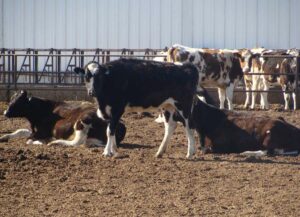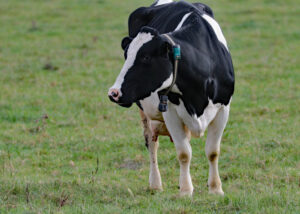Fernando Díaz
Besides reducing erosion and improving soil health, double cropping winter annuals as forage crops in combination with corn is a common practice for increasing total forage yield per unit area of land in locations with long growing season. This strategy; however, is riskier in short seasons areas in which yield of one or both crops may be negatively affected. A recent study published in Applied Animal Science reported an economic analysis of including a double cropping system on northern and western Pennsylvania dairies.
The researchers (Ranck et al., 2019) evaluated 4 dairies in which a winter annual was planted in the fall after a corn crop and harvested in the spring for silage. On average, dairy herd and farm size were 292 cows (range: 54 – 663) and 319 hectares (range: 26.3 – 511), with 14.1% (range: 9.3 – 23.8%) of the land double cropped during two consecutive years (2016 and 2017). While one of the farms reported limited land base as the main reason for double cropping, the primary reason in the other 3 farms was to improve profitability or to reduce negative environmental impacts.
Every farm used a different annual seed blend including cereals (rye, triticale or wheat), and one of the farms additionally included annual ryegrass and clover in the seed blend. These were the main characteristic of the winter annual crops and silages:
- Planting and harvesting dates of winter annuals ranged from September 10 to October 25 and April 26 to June 1, respectively.
- Average winter annual seeding rate across farms was 185 kg/ha.
- Winter annual silage yield averaged 3.45 t/ha.
- Average winter annual silage nutrient composition (on a dry matter basis) was: 26.8% dry matter, 14.1% protein, 56.7% fiber, and 64.5% fiber digestibility at 30 hours.
- The cost of production for winter annual silage averaged $252 per-tonne of dry matter basis.
In summary, the authors reported that in 3 of the 4 farms evaluated, producing winter annual silage was more expensive than buying alternative forage such as grass hay. Cost of equipment overhead along with cropping expenses and reduced silage yields were the main factor associated high cost of production. Interestingly, all farms continue doing double cropping after the study because they believed there was an economic advantage for their operations.
In conclusion, despite increasing forage production per unit of land, double cropping is not always a viable option in short season growing areas.
Reference
Ranck, E., J., L. A. Holden, and K. J. Soder. 2019. Short Communication: Evaluating feed cost, income over feed cost, and the cost of production for milk and crops on 4 case study farms that double cropped winter annual silage and corn silage for 2 years in northern and western Pennsylvania. Applied Animal Science 35:74–82.











